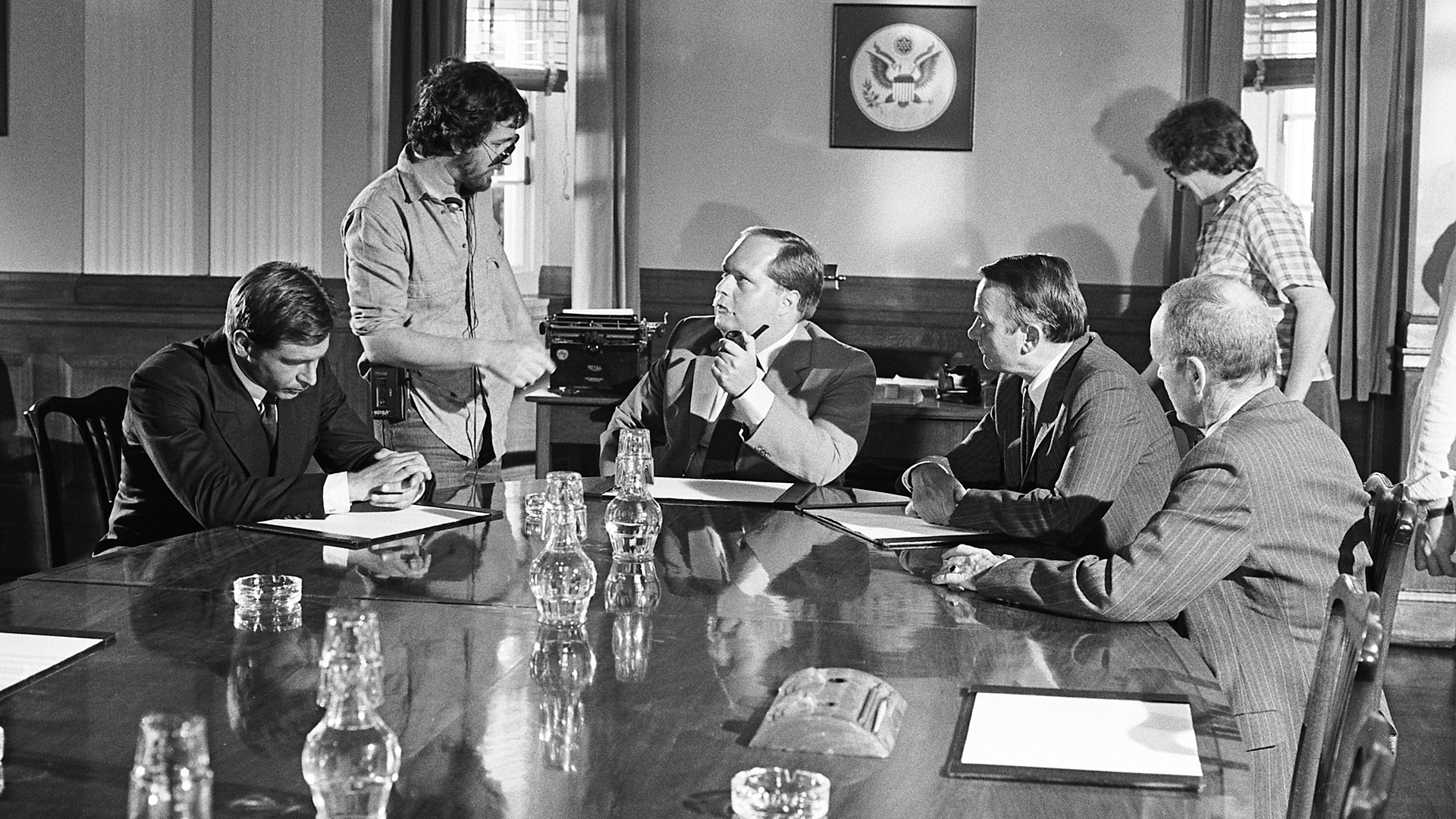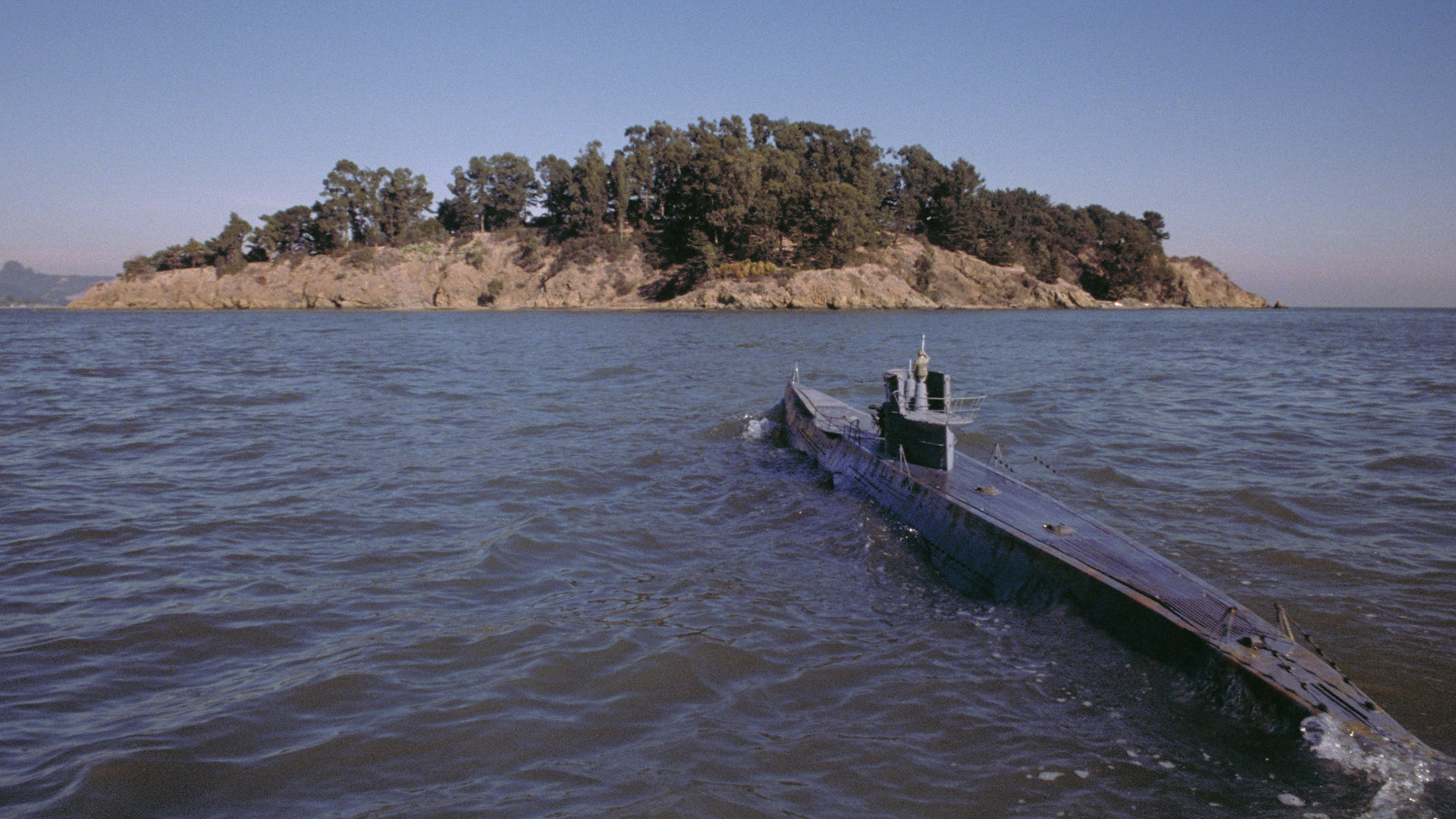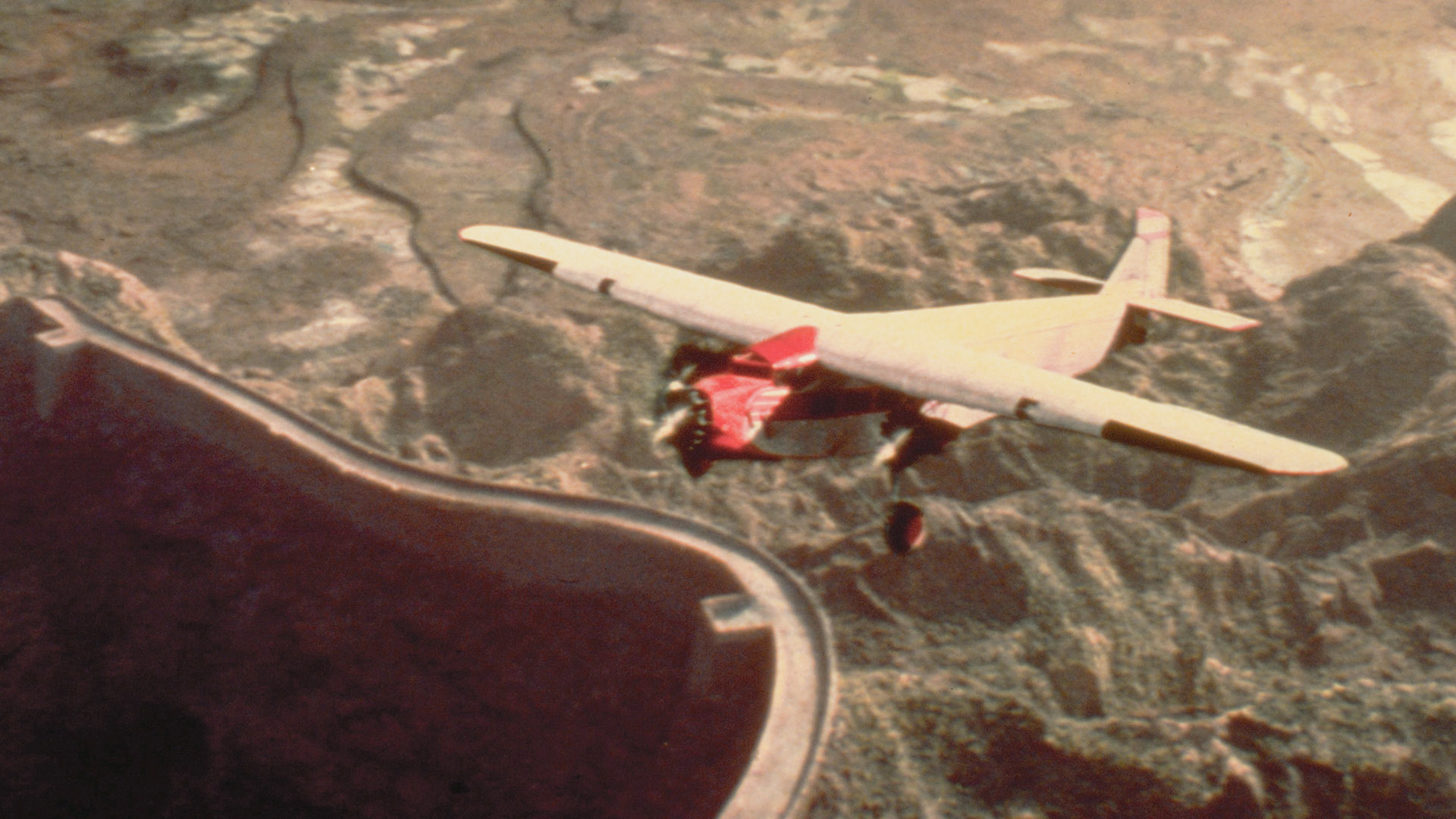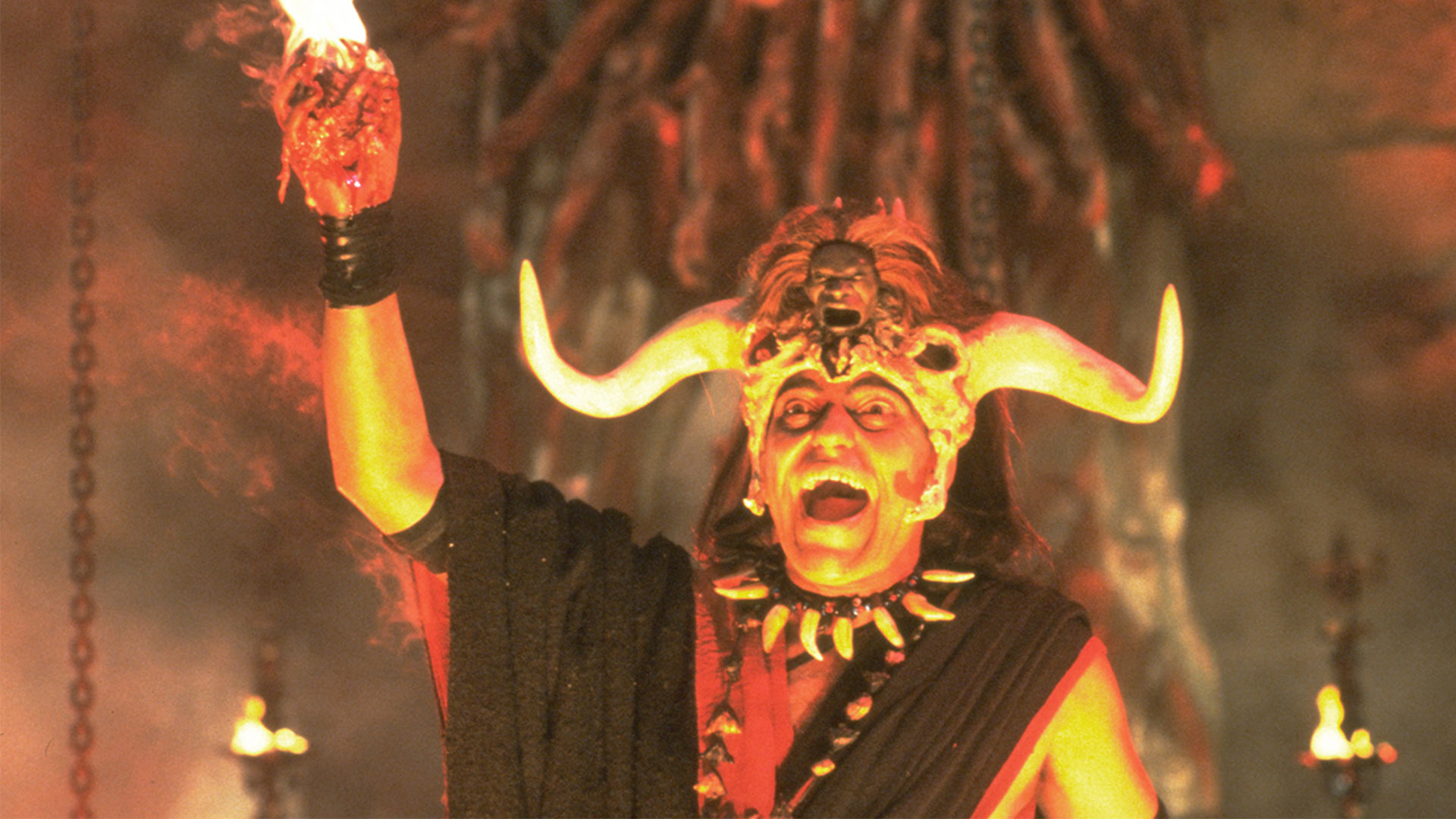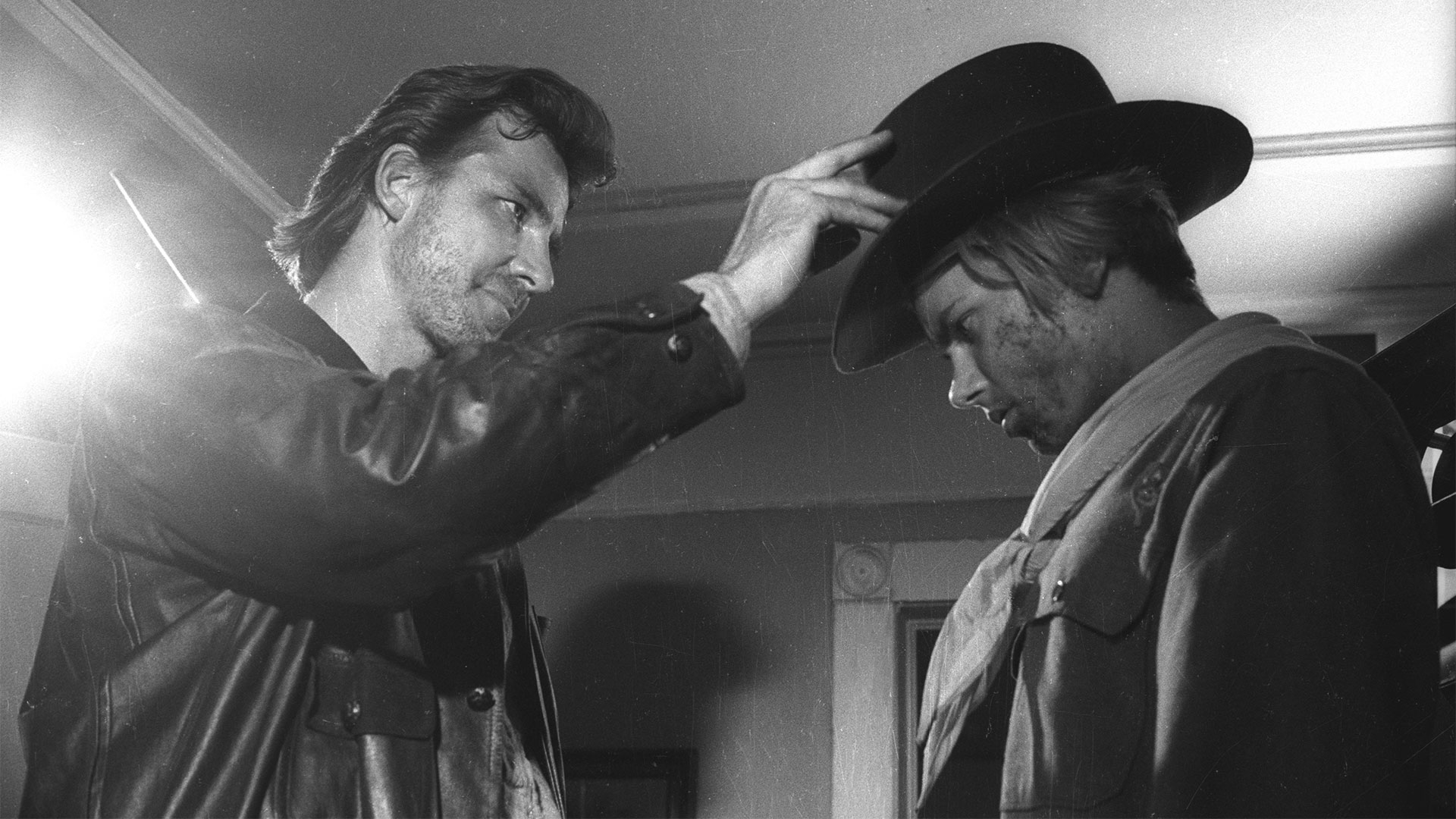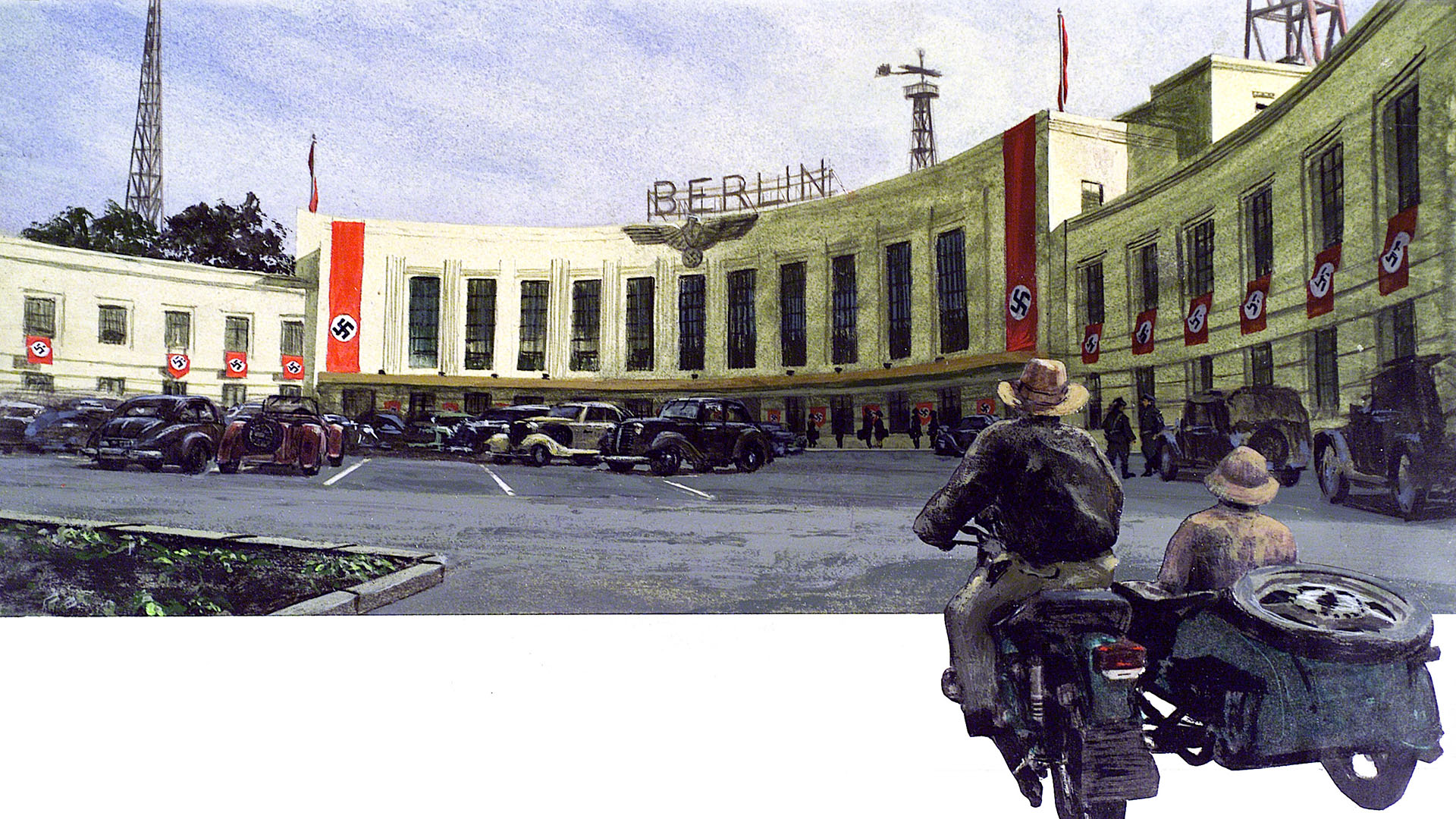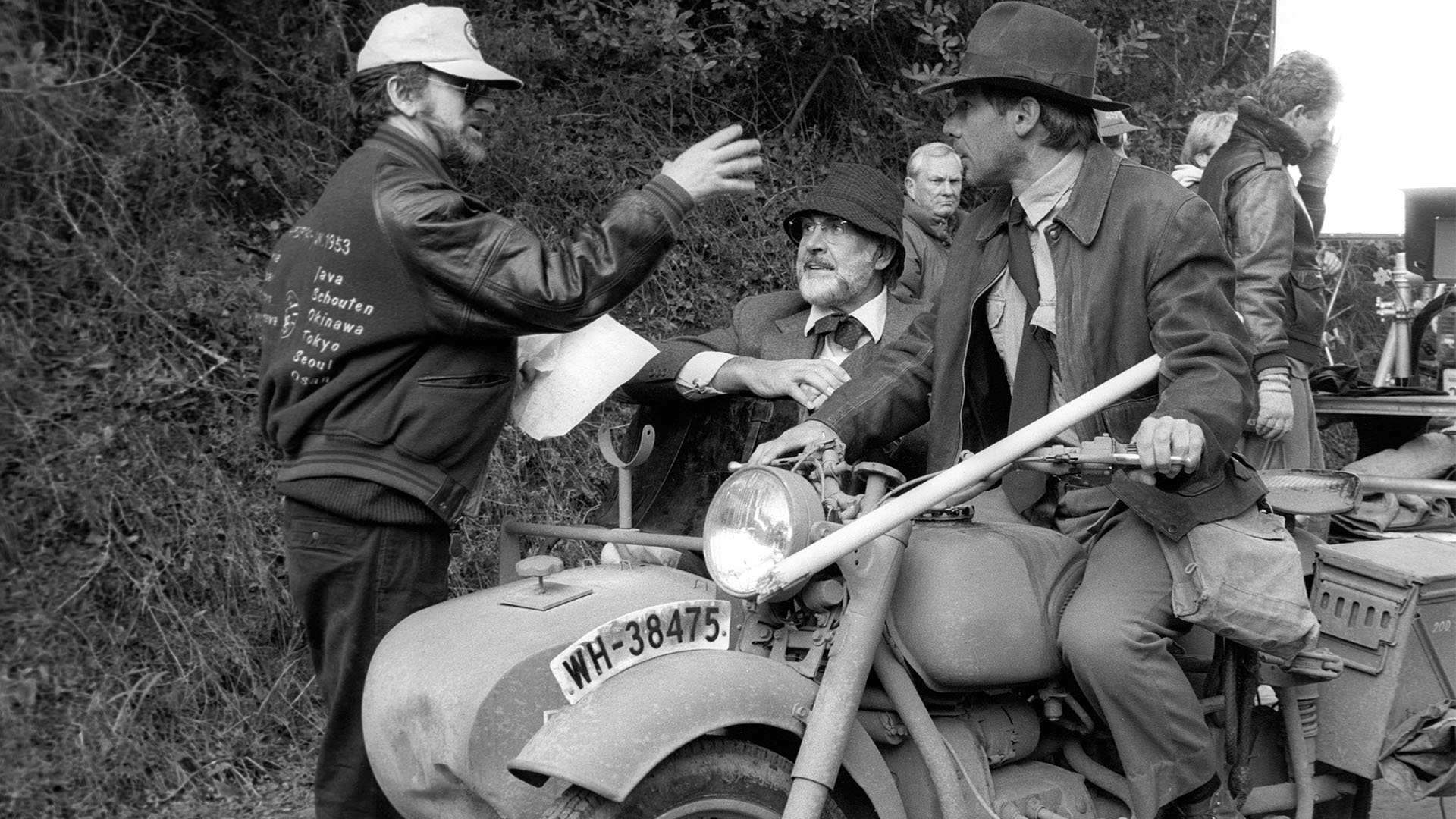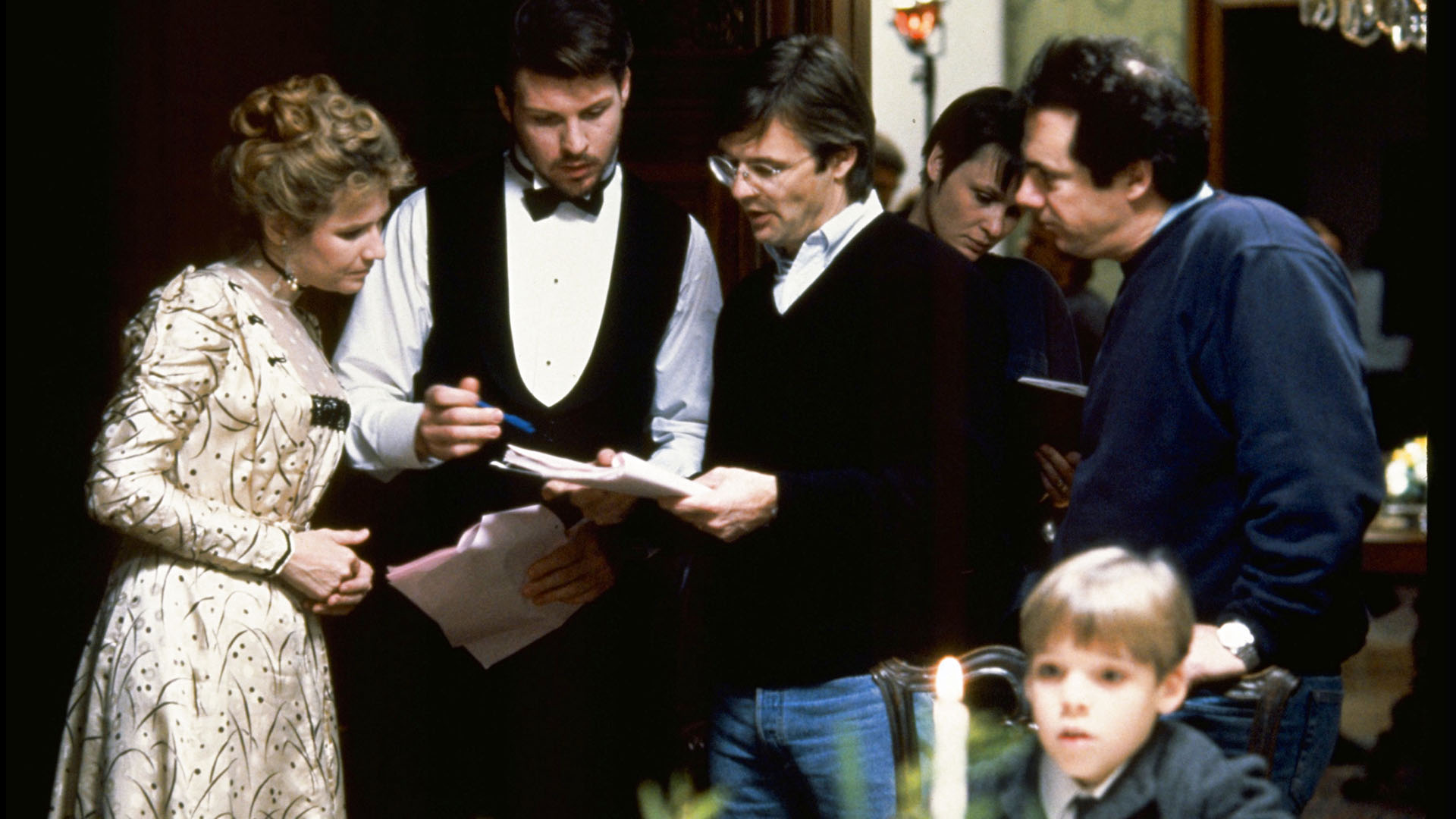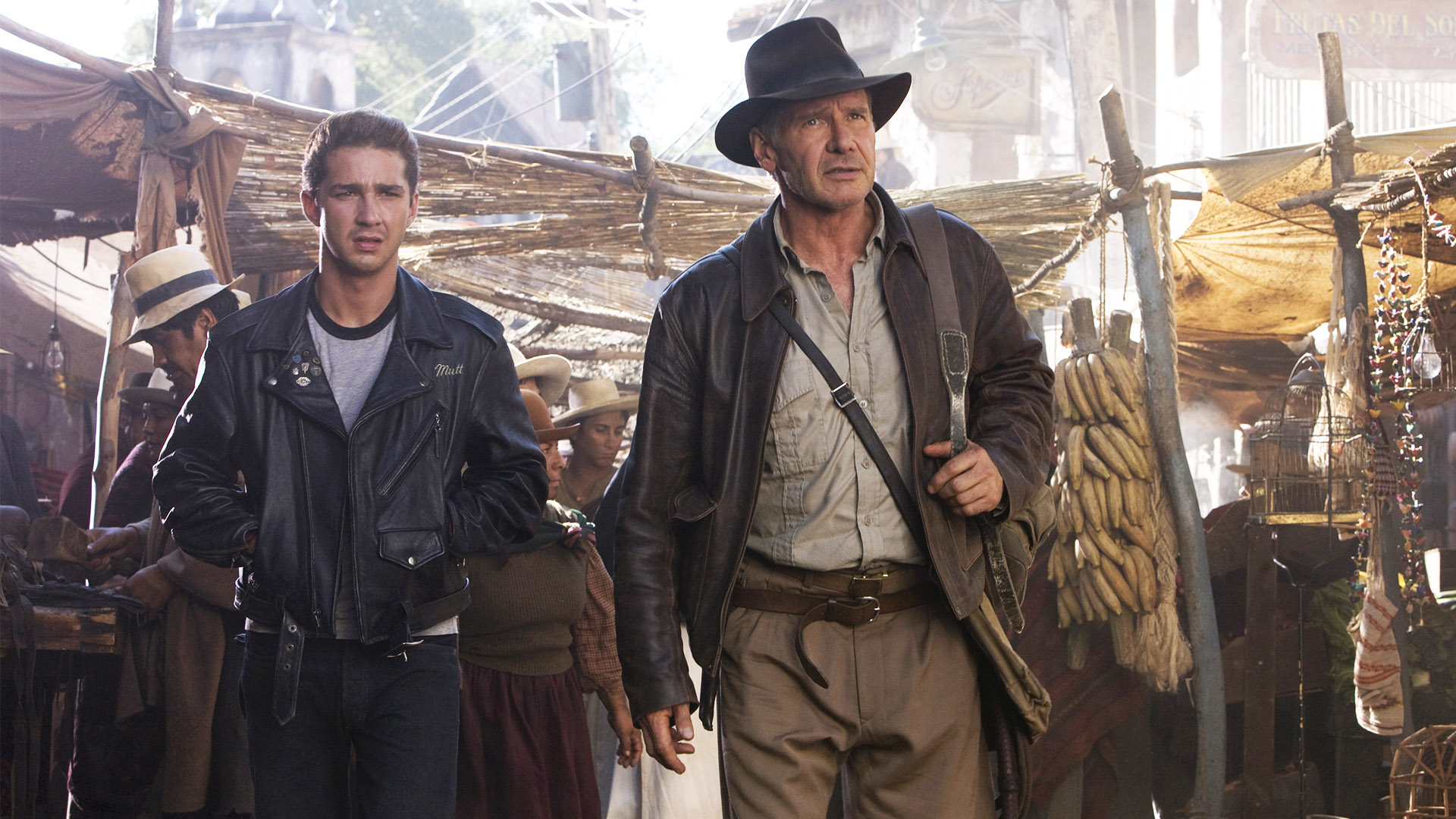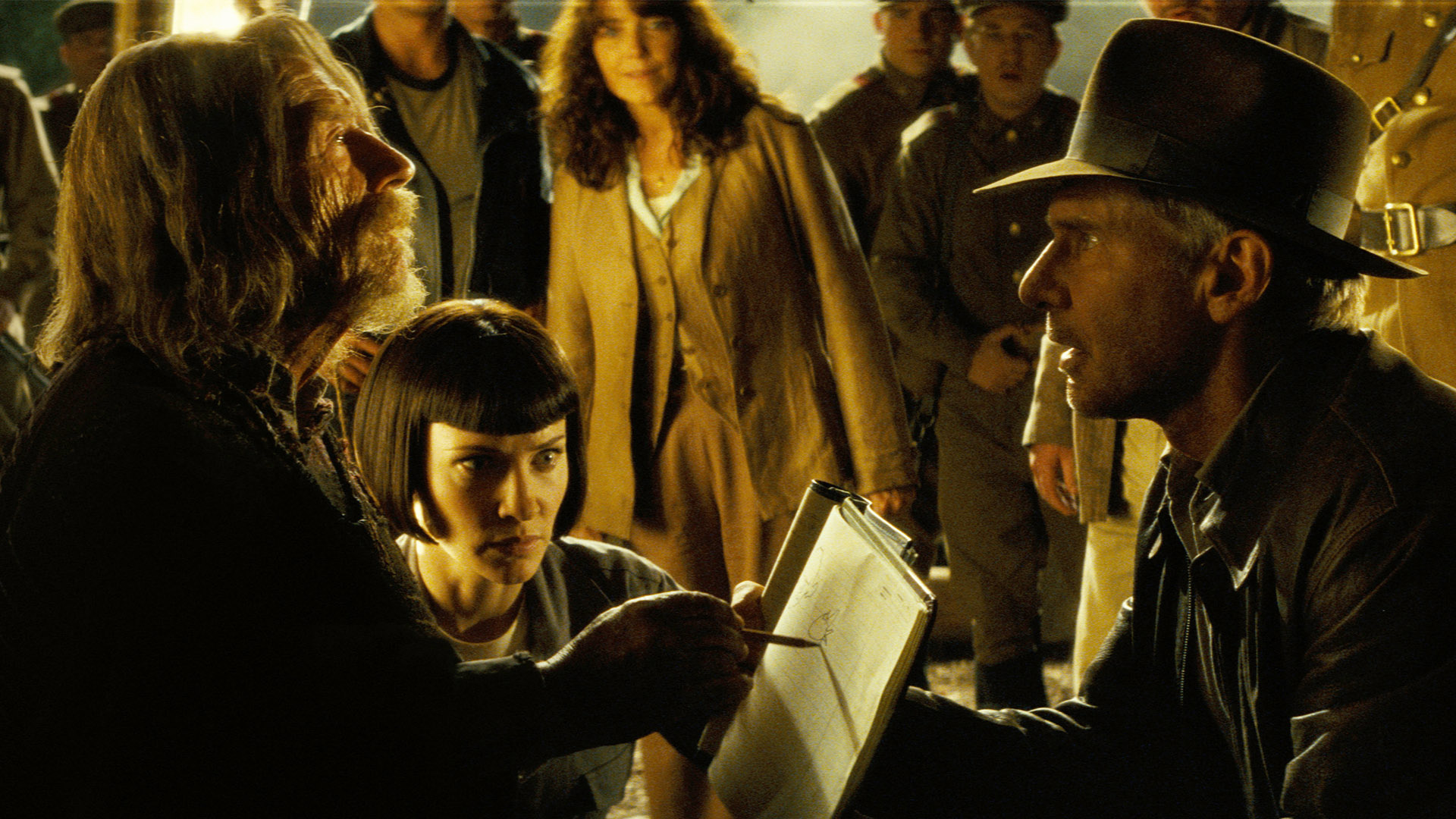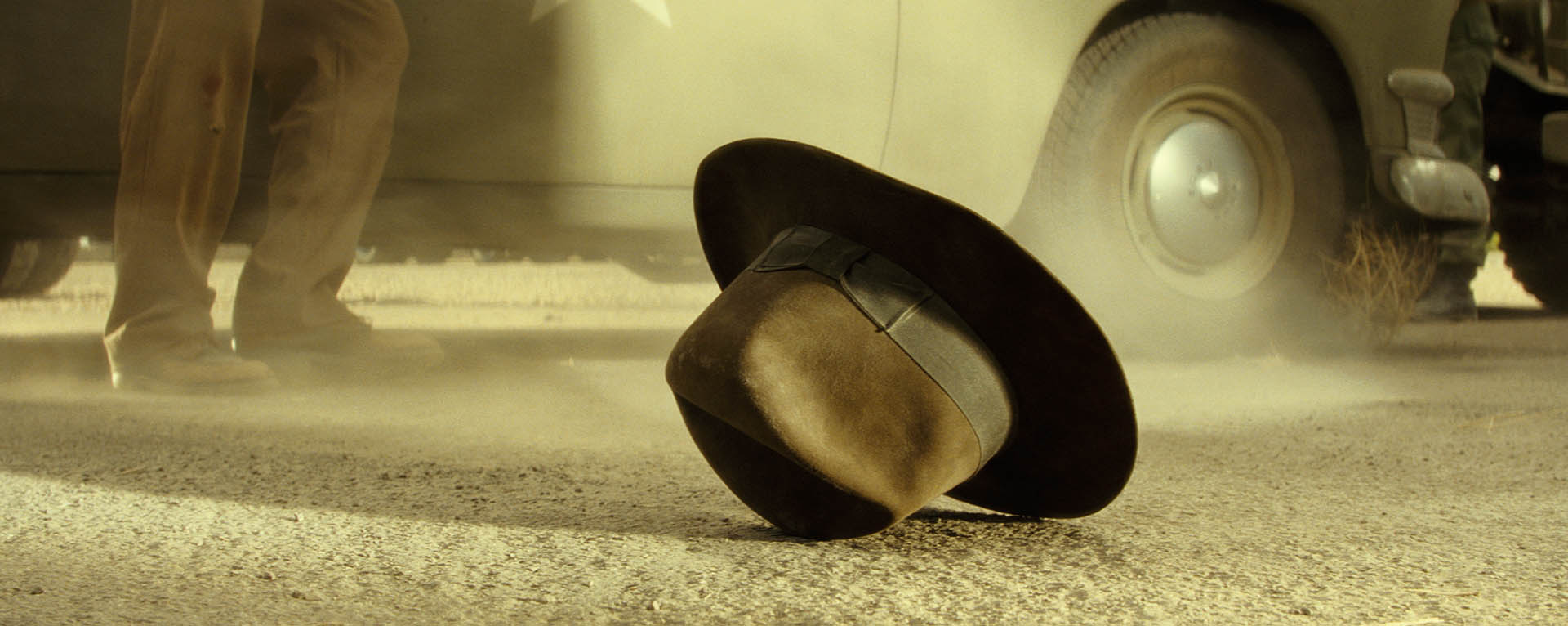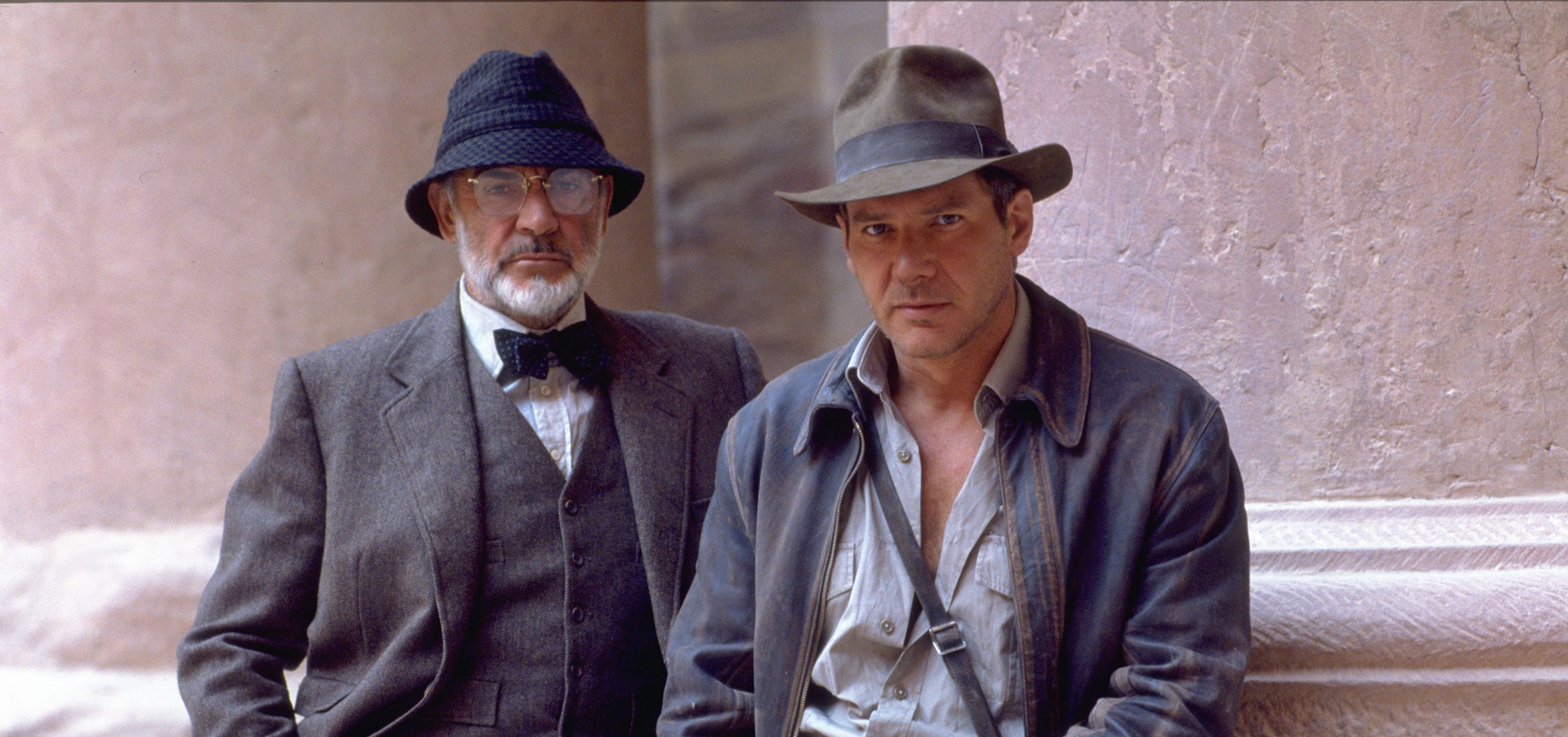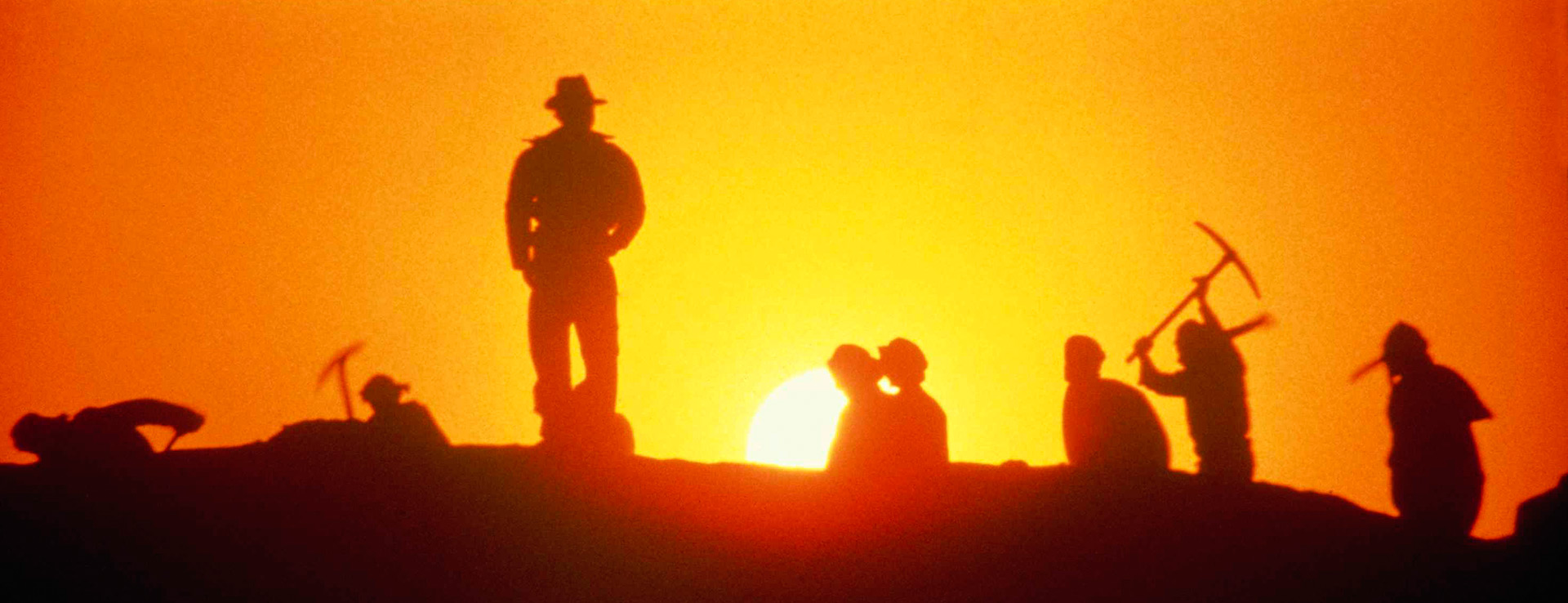Inside the World of Indiana Jones
Facts and Fancies From All Four Movies
The world of Indiana Jones is rich with history, sprinkled with the fantastic, and often requires a characteristic blend of fun and ingenuity to bring to movie screens. Revealing behind-the-scenes details and lesser-known secrets of Indy’s adventures are a favorite pastime to be shared amongst Indy fans. What might you discover on your own?
Indiana Jones and the Raiders of the Lost Ark
“Top Men”
Though unnamed in the film, the “Army Intelligence” agents who meet with Indy and Marcus Brody are known as Eaton and Musgrove (the former played by Bill Hootkins, known to Star Wars fans as Jek Porkins in A New Hope). In the first story summary for the film from 1978, three agents meet with Indy and Marcus rather than two, the additional man being named Davona. After their first discussion, the agents confront Indy in his home later that evening and convince him to go on the hunt for the Ark only after revealing that his French nemesis, Victor Lomar (who’d later become Rene Belloq), was already after it.
Good Sounds Come from Anywhere
Among the many ingenious sound effects in Raiders of the Lost Ark, one required sound designer Ben Burtt to travel all the way to his kitchen to record. For the unnerving hoard of snakes inside the Well of Souls, Burtt tried running his fingers through a cheese casserole made by his wife. “It gives a real oily, mushy sound,” he would later explain. “If you can record that and build it up in several layers, you can give a nice sense of slimy snakes.”
A Secret Island Near San Francisco?
To film the arrival of the German submarine at its hidden base in the Mediterranean Sea, the visual effects artists at Industrial Light & Magic (ILM) borrowed a miniature prop from Steven Spielberg’s 1979 film, 1941. The model was floated through San Francisco Bay towards one of the two Marin Islands just off the shoreline from ILM’s then-headquarters in San Rafael. The real-world-island was later replaced with a matte painting. Sharp-eyed viewers might catch a small Indiana Jones figure latched to the top of the submarine, hinting at Indy’s method of survival during the long voyage.
Indiana Jones and the Temple of Doom
A Hollywood Opening
Perhaps the most distinctive element of Temple of Doom is its lavish musical opening where Kate Capshaw as Willie Scott sings “Anything Goes” in both English and Mandarin. The standard had debuted in 1934 with Cole Porter’s musical of the same name, just a year before the setting of the film. Capshaw recorded the vocals in early July 1983 at Abbey Road Studios and soon after began shooting the number, including an omitted sequence where white doves appear from underneath the dancers’ glittering hats. Associate producer Kathleen Kennedy even surprised director Steven Spielberg when she dressed as a dancer and struggled to keep up with the professionals during a take. After Temple of Doom’s release, sheet music for “Anything Goes” was specially published in Mandarin as a licensed product.
Blink and You’ll Miss It
Did you notice the Great Wall of China pass by? When Indy, Short Round, and Willie escape from Shanghai, their Ford Tri-Motor airplane flies over the ancient landmark. As a collaboration between ILM and Dream Quest Images in Los Angeles, a model aircraft was filmed and combined with separate footage of a detailed model of the Great Wall. The result was an optical trick of forced-perspective. “The Great Wall was shot in smoke,” explained visual effects supervisor Dennis Muren at the time, “with the entire thing backlit to look like early morning. The plane was intentionally made to crab across the background, not in a straight line as everyone would expect.”
A Villain Redeemed?
When Indy falls under the black sleep of the Kali Ma, Short Round releases him from the “nightmare” with the burning flames of a torch (and later does the same for the young Maharajah). But does this also happen to the villainous Mola Ram? Just before his mortal fall to the river below, Ram catches one of the glowing Sankara Stones, burning his hand. For an all-too-brief moment, he appears “as if he’d just awakened from a nightmare,” as the Temple of Doom novelization by James Kahn put it. But it is too late, and Mola Ram meets his own doom. A shooting script summary for the film noted the same effect on Indy’s antagonist, a curious insight that invites “a pang of sympathy,” as Kahn wrote.
Indiana Jones and the Last Crusade
Another Unusual Name
It’s well known that the name “Indiana” was inspired by George Lucas’ own dog, but what about a character named after a hat? In the opening prologue, the mysterious treasure hunter (played by Richard Young) whom Indy comes to model himself on is literally called “Fedora” in the script and end credits. More an archetypal placeholder than precise name, the moniker references the central role the character plays in giving his hat to Indy (in a handful of other sources, he is sometimes referred to as “Garth”).
“A Chase Movie”
During the editing of Last Crusade, Steven Spielberg “realized the film had become a chase movie,” and determined it needed more action. So a motorcycle chase was added to the story. Cast and crew (including Harrison Ford and Sean Connery) reunited some months after principal photography had wrapped, and the sequence was filmed on private property near the Marin County town of Fairfax, just a short drive from Skywalker Ranch. For Indy and his father’s arrival at a Berlin airport, body doubles were filmed driving the motorcycle towards the Administration Building on San Francisco’s Treasure Island, which was still an active Naval base at the time (the building was then augmented with a matte painting).
Father and Son
Both Joneses carry significant emotional baggage in their relationship, and have done so for about as long as either can remember. The Adventures of Young Indiana Jones television series, which first aired in the 1990s, illuminates many details about their mutual failure to adequately bond. The elder Jones cares for his son (especially his education), but is distant, cool, and preoccupied with his work. Indy is pugnacious, eager, and quick to judge his father’s intentions. The loss of wife and mother Anna Jones at an early age (even before the events of Last Crusade’s prologue), effectively solidifies their aloofness to each other. A final argument when a 20-year-old Indy returns from World War I service (which his father never agreed to) creates a lasting emotional void, leaving Indy to remind his father in Last Crusade that they’ve “hardly spoken for 20 years.”
Indiana Jones and Kingdom of the Crystal Skull
Return of an Icon
“It fit like a glove,” remarked Harrison Ford when in early 2007 he put on Indy’s costume again for the first time in 18 years. Costume designer Bernie Pollack had actually borrowed an original outfit from Indiana Jones and the Last Crusade from the Lucasfilm Archives, and brought it personally to Ford’s home for the initial fitting. Back in his familiar accoutrement, Ford “felt really really comfortable and ready to go.”
“A Long Story”
Arriving in Nazca, Peru, Indy is able to communicate with the locals by using an indigenous Quechan language. He tells Mutt that he learned the dialect in Mexico when he rode with General Francisco “Pancho” Villa and his revolutionaries. Many Indy fans will know this to be a reference to The Adventures of Young Indiana Jones in which the teenaged adventurer “enlists” in Villa’s ranks in 1916 (as Indy says, “technically I was kidnapped”). This story was part of the series’ premiere episode, which aired in March 1992 as “Young Indiana Jones and the Curse of the Jackal.”
Helpful Inspiration
Director Steven Spielberg had a specific inspiration in mind when he cast the late actor Sir John Hurt in the role of Harold Oxley. “Do you know Treasure Island?” Spielberg asked. “This is our version of Ben Gunn.” Robert Louis Stevenson’s fabled character was a marooned buccaneer, a “chief for raggedness,” wild-eyed and raving, but also cunning and good-hearted. “Prejudice all your [performance] choices toward the Ben Gunn iconic image,” Spielberg told his actor.
